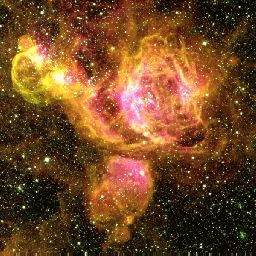
Roger Leiton-Thompson
GLOBULAR CLUSTER OBSERVATIONS IN PREPARATION FOR
HIGH-PRESICION ASTRONOMETRY MISSIONS (SIM, GAIA) *
INTERESTS & PROJECTS:
- Magellanic Cloud Emission-line Survey (MCELS)
- Supernova Remnants in the LMC
- NASA's Space Interferometry Mission (SIM):
Galactic Globular Clusters
- Light Pollution and Sky Brightness
- Chilean Section of the International Dark-Sky Association (IDA-Chile)
- Astronomy Outreach:
International Year of Astronomy 2009 in Chile.
My CV (June 2007)
Publications in ADS
Talks and outreach material (mostly in Spanish):
- Efecto Casimir
- Supernovas, Aficionados y el destino del Universo
- Contaminacion Luminica
Last Update:
August 2007
Steve Majewski, Ricky Patterson (U. of Virginia),
Wolfgang Gieren (U. de Concepcion),
Dave Spergel, Scott Tremaine (Princeton) ,
Eva Grebel (Basel),
Carl Grillmair (IPAC),
Kathyrn Johnston (Wesleyan),
Neil Reid (STScI)
(*) = presented in SOCHIAS meeting, La Serena 2006.
SUMMARY
We present a progress report on the observations of some members of the Milky Way globular cluster (MWGC) system as preparatory work for our Space Interferometry Mission PlanetQuest (SIM) Key Project (SIMKP). The observations in the Washington+DDO51 filters will fulfill at least three goals: (1) Our SIMKP aims to measure the proper motion of every MWGC; however, because of the large mission expense per faint target the interferometer will be able to measure at most three stars for the majority of clusters. Using the luminosity discrimination of the DDO51 filter we will isolate in each globular cluster the most likely brightest red giant tip members that are sufficiently uncrowded. (2) A second goal of our SIMKP is to measure the mass distribution of the Milky Way via stars in elongated, tidal streams in the halo. These streams must be identified in advance, and we will conduct a survey of globular clusters to identify any that may be useful for this purpose. (3) Our observations will establish a homogeneous measurement of [Fe/H] (from contaminant-free giant branches) in the Washington filter system, which has a very high sensitivity to red giant branch metallicity. Our SIMKP should prove to be a legacy for Milky Way research. These goals could also be pursued with GAIA.
SCIENTIFIC JUSTIFICATION
The globular clusters (GCs) of the Milky Way (MW) provide unique test particles for mapping the potential of the entire Galaxy, to 120 kpc. The orbits, masses, metallicities, ages, and HB morphologies of GCs provide strong constraints on MW formation scenarios. These studies are primary goals for the SIM PlanetQuest mission (SIM). Our group has been awarded a SIM Key Project (Majewski PI, with a total of some 1700 hours of SIM observing) to measure the proper motions (PMs) of all MWGCs with 1 − 4μas yr− 1 accuracy.
Our SIMKP will also observe stars in numerous tidal streams to measure the halo mass profile as a function of radius: Johnston et al. (1999) demonstrate how tidal stars with fully determined space motions can yield a measurement of the enclosed Galactic potential to a few percent.
From combined radial velocities, SIM GC distances and our PMs, and a much better SIM-constrained Galactic potential, vastly improved orbits will be determined for the entire MWGC system and the scale of our Galaxy will be nailed down.
For the above science goals to be met within their expected time allotments, it is imperative to identify with certainty the very brightest observable giants for each GC (<∼ 3 stars each for the GCs for PMs).
OBSERVATIONS AND ANALYSIS
We therefore are performing a systematic, shallow survey using the LCO Swope-1m telescope to identify bright, red giant members in and around the MWGCs using Geisler’s (1984) technique designed specifically for this purpose. The surface-gravity discriminating power of the DDO51 filter identifies giant stars photometrically over relevant abundances with great efficiency, when combined with broadband Washington filters (Figure 1a and 1b). A key to our project is large area coverage, both to investigate giant star membership at large GC radii and to address the SIM need for identified halo tidal streams. Detailed simulations have shown that, in order to meet the stringent SIM demands (no object less than 8 mags fainter than the GC star within the SIM 1” aperture), the targets should be selected at a distance of roughly half of the tidal radius from the cluster center, where field star contamination is more problematical and where our photometric dwarf/giant discrimination technique is especially efficient.
Follow-up very high spatial resolution imaging (to confirm the above limit) as well as radial velocity membership confirmation will produce the final SIM input catalogs. An additional benefit of our survey will be the first completely homogeneous set of GC giant branches – cleaned of contaminating field dwarfs – for the entire MWGC system. Because Washington photometry gives three times better [Fe/H] precision than the V, I system with much less sensitivity to age and reddening (Figure 2a and 2b), we will be able to put all GCs on an improved, uniform photometric abundance scale.
REFERENCES:
Da Costa, G. & Armandroff, T. E., 1990, AJ, 100, 162.
Geisler, D., 1984, PASP, 96, 723.
Geisler, D. & Sarajedini, A. 1999, AJ, 117, 308.
Grillmair, C.J., 1998, in ASPCS 136, “Galactic Halos: A UC Santa Cruz Workshop”, D. Zaritsky (ed.), p. 45.
Grillmair, C., et al., 1995, AJ 109, 2553.
Johnston, K. V., et al., 1999, ApJLett, 512, L109.
Johnston, K., et al., 2002, ApJ, 570, 656
Majewski, S. R., Ostheimer, J. C., et al., R., 2000, AJ, 120, 2550 Odenkirchen, et al., 2003, AJ, 126, 2385
Paltoglou, G. & Bell, R. A., 1994, MNRAS, 268, 793.